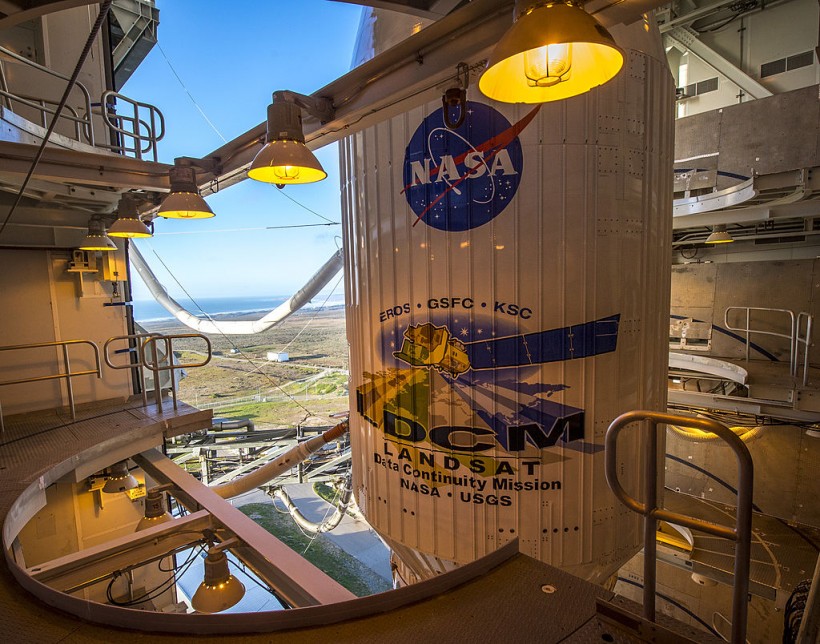NASA's Landsat 9, the most powerful satellite to observe the Earth, is launching into orbit on Sept. 27 atop ULA's Atlas V Rocket after it faced a delay due to liquid nitrogen shortage.

ANDENBERG AIR FORCE BASE, CA - FEBRUARY 10: In this handout provided by the National Aeronautic and Space Administration (NASA), The United Launch Alliance (ULA) Atlas-V rocket with the Landsat Data Continuity Mission (LDCM) spacecraft onboard is seen on February 10, 2013 at Vandenberg Air Force Base, California.
As per Space.com, the Landsat 9 is launching from the Vandenberg Space Force Base by 2:12 pm.
NASA Landsat 9 to Launch on Sept. 27
In a press conference on Saturday, Sept. 25, the launch director of NASA, Tim Dunn, himself assured the public that "the spacecraft, the Atlas V rocket, all range equipment, are ready."
On top of the Landsat 9, the ULA Atlas V Rocket will also be transporting four CubeSats into orbit, two of which will fly for the United States Space Force in a classified mission.
Meanwhile, the other two will observe both the exoplanet atmospheres and solar wind for further NASA studies.
On the other hand, the Landsat 9, the most advanced and powerful satellite to study our home planet from orbit, will look into the natural occurrences in the Earth, such as powerful storms, wildfires, and other extreme weather.
Not to mention that the latest satellite will also observe the climate change on Earth, which previous Landsats have been studying since 1972.
NASA Landsat 9 Launch Delay Due to Liquid Nitrogen Shortage
Initially, the NASA Landsat 9 was expected to launch last Sept. 16.
However, as per Gasworld, Landsat 9 had an issue with the supply of liquid nitrogen last Sept. 1 due to the raging wrath of the COVID-19 pandemic.
As such, the NASA Landsat 9 was moved to a later date, or on Sept. 23 to be exact.
Last Aug. 27, NASA announced that the Landsat 9 is supposed to launch by Sept. 23 to serve as a satellite that helps observe the national resources of Earth from its orbit.
But, yet again, the Landsat 9 faced another hurdle concerning high winds, leading it to another delay to Sept 27.
Read Also: NASA GOES-U Mission: Elon Musk's SpaceX Wins Contract; Falcon Heavy Rocket to Fly in April 2024
Liquid Nitrogen Shortage
Last Aug. 27, NASA first announced that the supply of liquid nitrogen is facing an unprecedented shortage due to the increasing COVID-19 variant due to the more transmissible Delta variant.
It is worth noting that liquid nitrogen is not only used to lift off the satellite in orbit. It is also an essential component for the survival of COVID-19 victims battling the severe effects of the novel coronavirus.
As such, COVID-19 patients use oxygen for their ventilators when their breathing suffers from the severe symptoms of the virus.
On the other hand, the space industry is also highly dependent on liquid oxygen as it serves as an oxidizer for rocket propellants.
It explains why rocket launches are paired with excessive steam as hydrogen reacts with oxygen to turn into water.
Related Article: NASA Small Business Administrator's Cup Award Goes to Kennedy Space Center | Check Out This Year's Accomplishments
This article is owned by Tech Times
Written by Teejay Boris









